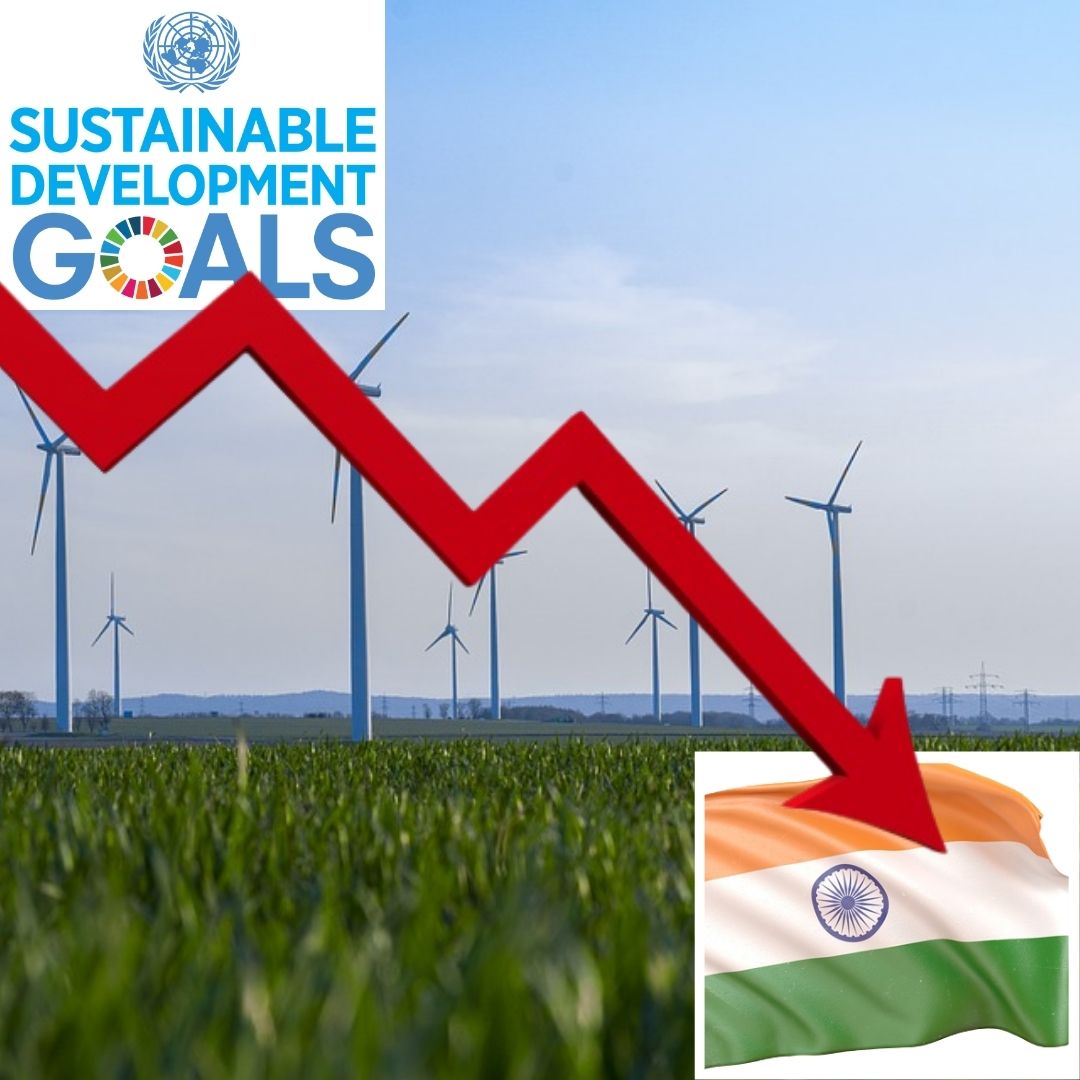India Slips To Rank 120 On 17 SDGs Adopted As 2030 Agenda, Lies Behind All South Asian Nations
Writer: Shiva Chaudhary
A post-graduate in Journalism and Mass Communication with relevant skills, specialising in content editing & writing. I believe in the precise dissemination of information based on facts to the public.
India, 2 March 2022 10:08 AM GMT
Editor : Snehadri Sarkar |
While he is a massive sports fanatic, his interest also lies in mainstream news and nitpicking trending and less talked about everyday issues.
Creatives : Shiva Chaudhary
A post-graduate in Journalism and Mass Communication with relevant skills, specialising in content editing & writing. I believe in the precise dissemination of information based on facts to the public.
Last year India ranked 117 among 192 United Nations members. This year, India scored 66 out of 100 in the overall SDG score and has further raised questions on India's approach towards sustainability.
India has dropped three spots from last year's 117 to rank 120 on the 17 Sustainable Development Goals (SDG) adopted as a part of the 2030 agenda by 192 United Nations member states in 2015, stated the latest report. With the latest rankings, India now lies behind all south Asian nations except neighbour Pakistan, which stands at position 129. India lies behind Bhutan (75), Sri Lanka (87), Nepal (96) and Bangladesh (109).
India managed to score 66 out of 100 in the overall SDG score, and it has further raised questions on India's approach towards sustainability, reported The Print.
Why India's Rank Dropped?
On Tuesday, the Union Environment Minister released the Centre for Science and Environment's State of India's Environment Report, 2022. According to the report, India's rank dropped mainly because of significant challenges on 11 SDGs: zero hunger, good health and wellbeing, gender equality, and sustainable cities and communities. The report noted that India's performance was also not up to the mark in managing quality education and life on land aspects.
Last year, India performed inadequately on the fronts of terminating hunger, attaining food security, achieving gender equality, building resilient infrastructure, and encouraging inclusive and sustainable industrialisation and innovation.
How Prepared Are The States and UTS?
On the state-level preparedness, the report mentioned that Jharkhand and Bihar are negligibly prepared to fulfil the SDGs by the target year 2030. While Kerala ranked first, followed by Tamil Nadu and Himachal Pradesh, sharing the second position. Goa, Karnataka, Andhra Pradesh and Uttarakhand secured the third position.
The report cited Chandigarh ranked first on the Union Territories-level preparedness, followed by Delhi, Lakshadweep and Puducherry in the second position and the Andaman and Nicobar Islands third place.
2030 Agenda For SDG
All the United Nations Member States adopted the 2030 Agenda for Sustainable Development in 2015, and it provides a disseminated blueprint for peace and prosperity for people and the planet. There are 17 SDGs which are an urgent call for action by all countries in a global partnership.
Also Read: The Nowhere People: Past, Present and Future Of Adivasis Displaced By Salwa Judum
 All section
All section















